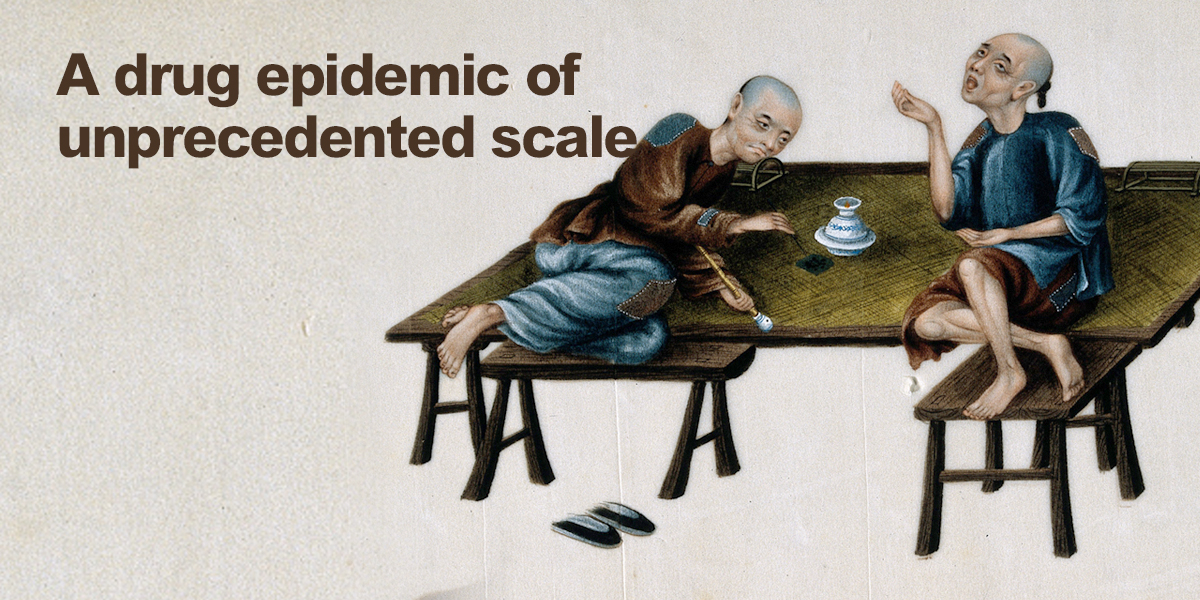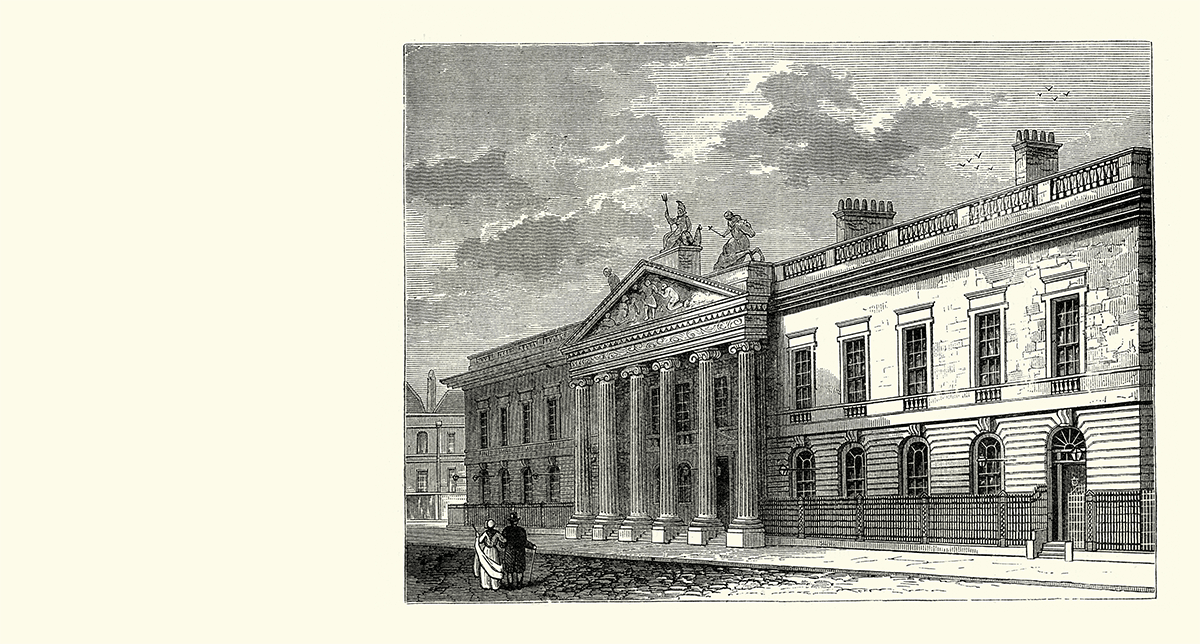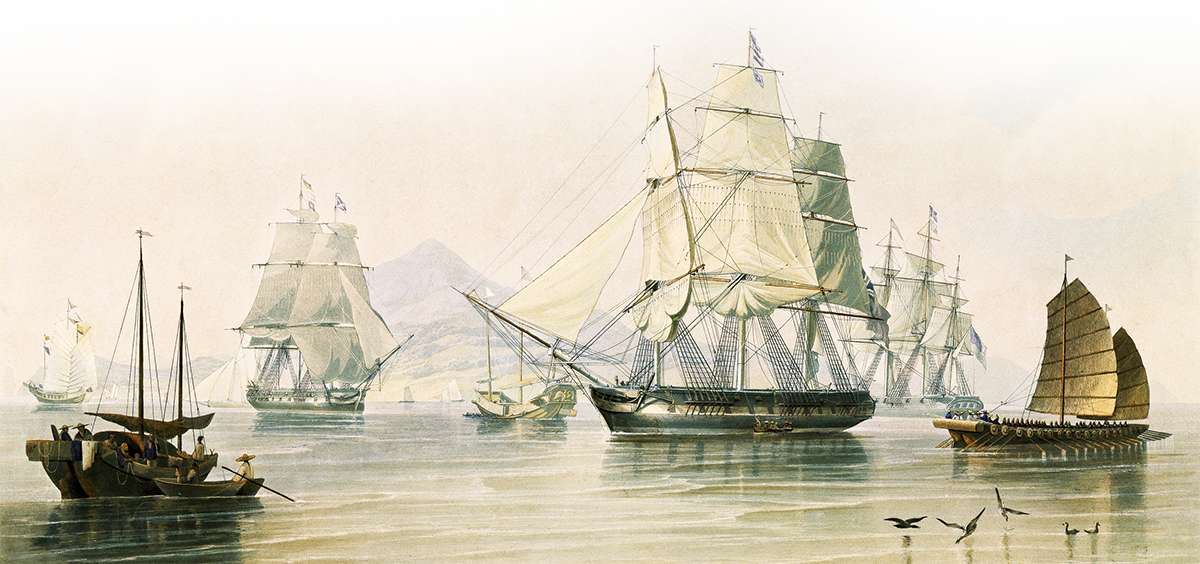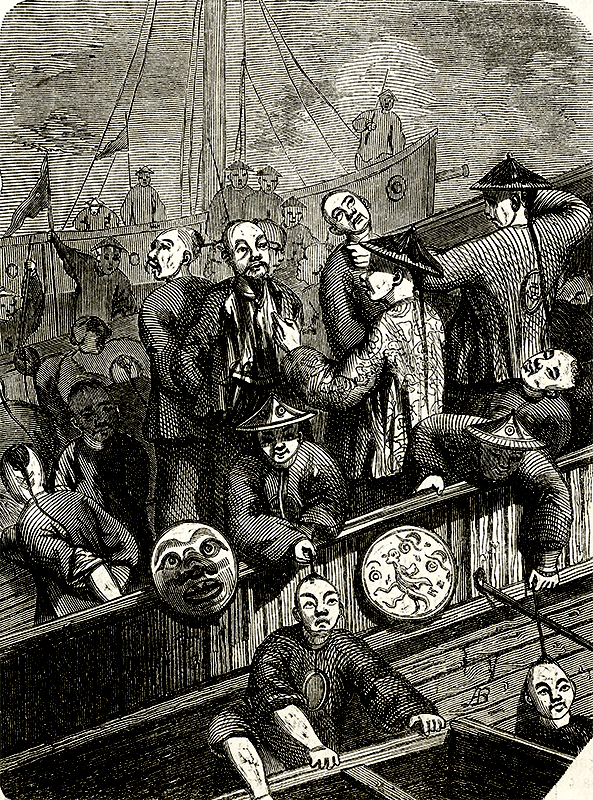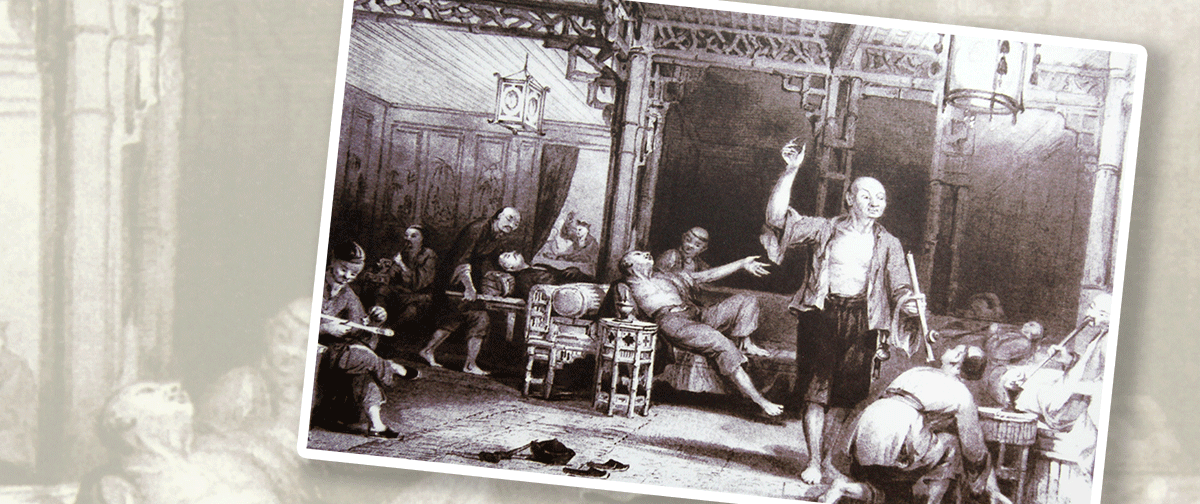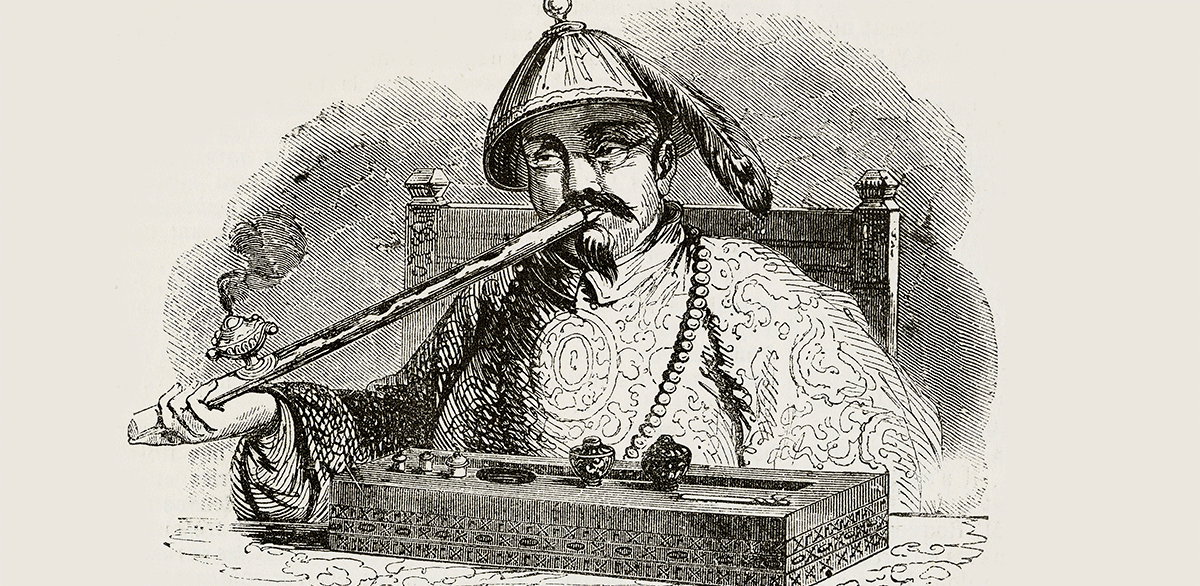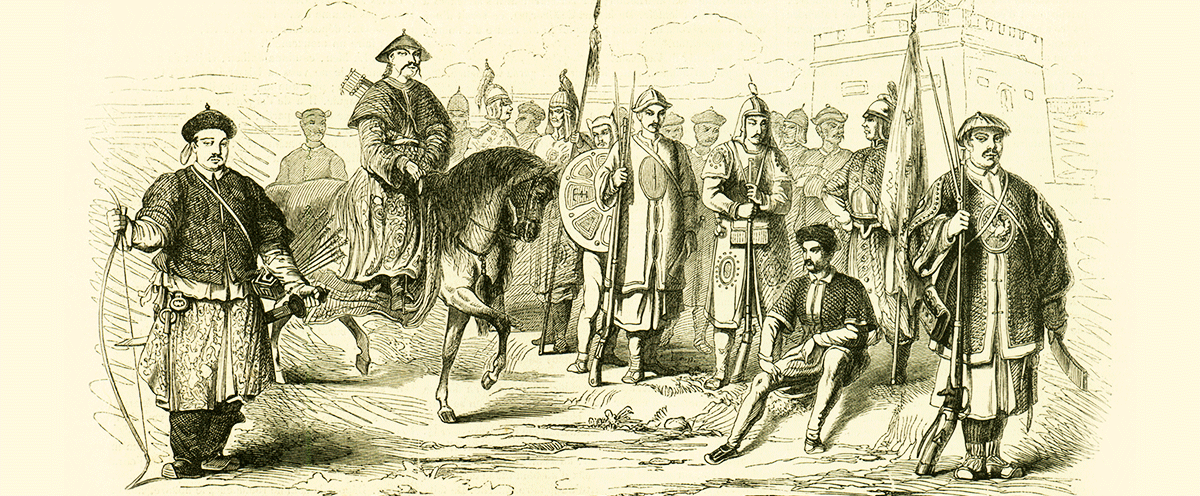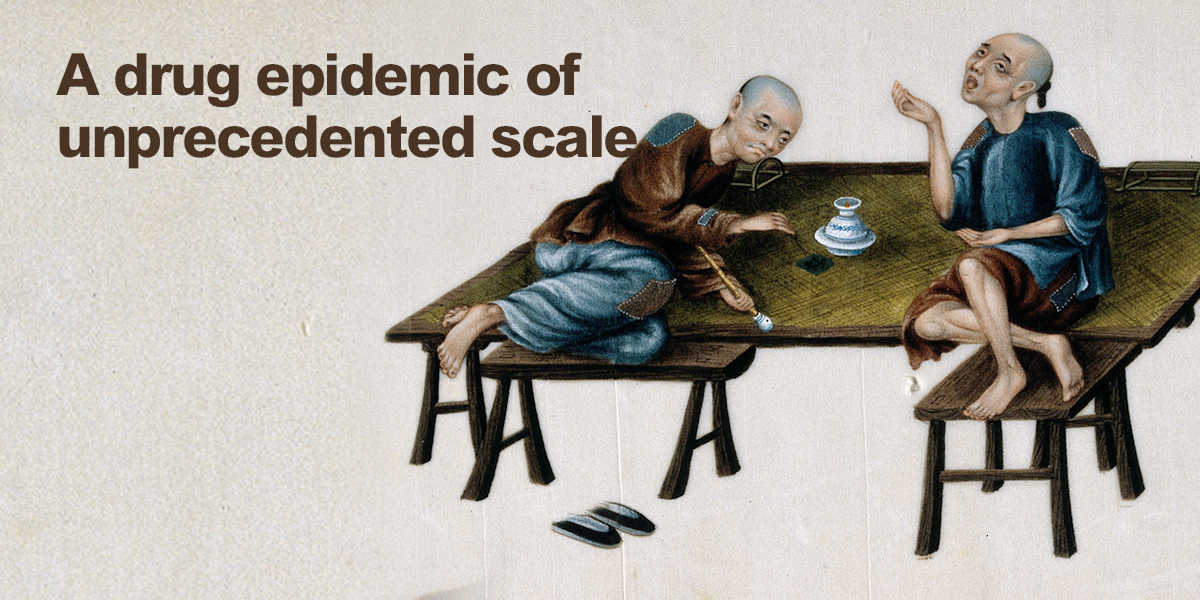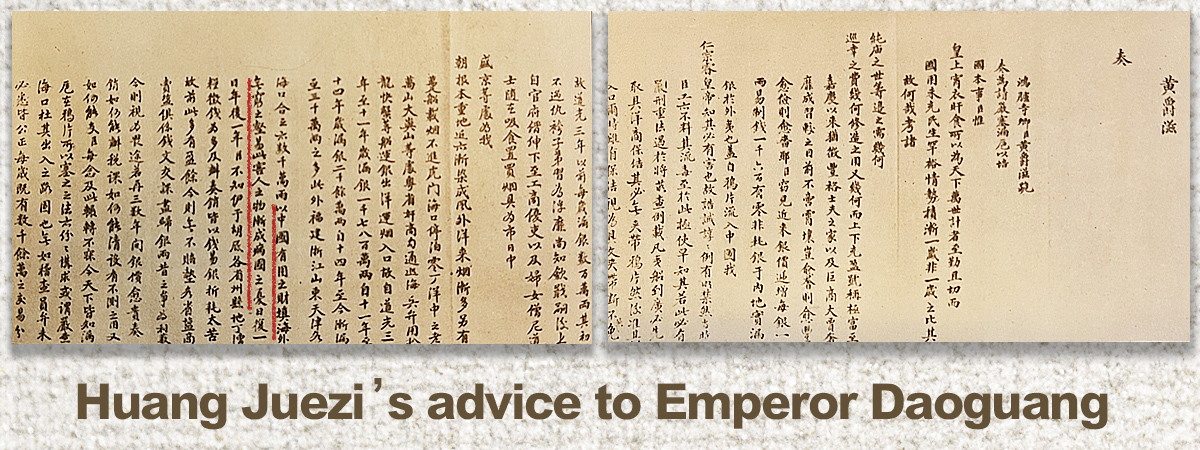In the early 19th century, British merchant ships – equipped with cannons and loaded with raw and semi-processed materials from its colonies as well as mass-produced goods from its industrial heartland, traded with countries all around the world. British traders were keen to include China in this network. Britain had a large trade deficit with China because the British public had a huge demand for Chinese tea, raw silk and porcelain, etc, but found it hard to sell to China textile products which China had adequate domestic supply. This deficit was balanced by British firms that smuggled large quantities of opium into China, making huge profits.
Opium – a highly addictive drug which also had legitimate medicinal properties – was sold and distributed by the British East India Company. Before 1765, China imported fewer than 200 boxes (each weighing 120 catties, or roughly 72 kilograms) of opium annually; by 1838 it had increased to 40,000 boxes. Between 1798 and 1839, British companies profited by $400 million from China-bound opium, which caused great harm in China where many, including prominent figures, became addicts. It also placed a heavy strain on the country’s finances. Prohibition of opium became a national priority.
|
|
Would the export of textile cloth, instead of opium, have legitimized Britain’s “gunboat diplomacy?” |
|
|
See answer below. |
Opium, made from the sap of the poppy, is a highly addictive and hard-to-quit drug that produces feelings of relaxation and contentment when smoked. The picture shows sap oozing from a freshly-scored poppy seed pod. Coagulated sap is collected and processed into bricks; a form that can be smoked.
Opium, also called “afyuni” and commonly known as “big smoke” in China, contains a large amount of morphine. Initially imported into China as a medicine, opium smoking became widespread and many people got addicted. The British East India Company grew it extensively in India (some of the areas are now in Pakistan) and built a huge trade in it. The Chinese authorities’ ban on the import of opium led to a war with Britain, which was called The Opium War (also known as the First Opium War or the First Anglo-Chinese War). Subsequently, The Second Opium War (also known as the Second Anglo-Chinese War or the Anglo-French Expedition to China, 1856-1860) involved the British and French allied against China.
The London headquarters of the East India Company in the 19th century. Prior to the Opium War, it had a monopoly on the trade of opium within India and its export to China.
Calcutta was used by the East India Company as a major depot for China-bound opium. Through rapid expansion of opium trafficking. Britain made tremendous profit in silver bullion and enabled it to balance its original trade deficit with China. This massive drain of silver from China led to devastating fiscal, economic and social impacts within the nation.
British opium merchant ships sailing the Lingding Channel (伶仃洋) off the Guangdong coast in 1824. Chinese junks sailing alongside the vessel appear small and antiquated in comparison.
Chinese naval officers boarding an opium-smuggling vessel to apprehend its crew. Opium was officially banned in China by the Qing government but law enforcement was hampered by inferior vessels and endemic corruption. By the first decades of the 19th century opium smuggling in Guangzhou waters had spiralled out of control and the drug flooded Chinese markets.
A 19th century opium den in China is depicted in the picture. With the mass import, opium smoking in China increased significantly, causing serious social harm and health issues.
Qing officials smoking opium. As opium flooded the nation, opium smoking was widespread among Chinese officials and exacerbated corruption in the government.
Soldiers of the Qing army in the 19th century depicted by a Western artist. The rampant abuse of opium spread to the army’s generals and soldiers, undermining Qing military forces.
This 19th century oil painting shows opium smokers with eyes glazed and emaciated bodies - the unhealthy effects of the drug. The opium epidemic, unprecedented in scale, turned millions of people from all walks of life, the rich and the poor alike, into drug addicts.
Opium had crippled China on all fronts: fiscal, military, economic and social. In June 1838, Huang Juezi (黃爵滋), The head of honglusi (鴻臚寺), informed Emperor Daoguang of the dangers of opium use, “China’s wealth, instead of being spent usefully, is poured into the foreign nations’ bottomless pit, all in exchange for harmful opium that is threatening to turn our nation into an infirmary.” Lin Zexu (林則徐), the then governor of Huguang (湖廣) also advocated a strict ban. “Without due action, China will soon have no soldiers to fight for the country and no money to pay for national defence,” he said. Emperor Daoguang was deeply moved by his impassioned words. The stage was thus set for an anti-opium campaign that would send shockwaves through China and the world.
The honglusi was a government department that mainly oversaw proceedings and rites of the Qing imperial court. It was headed by an official with the rank of honglusiqing. Wang Juezi, the honglusiqing at that time, was a righteous official greatly concerned about social ills, in particular those caused by opium. According to the Qingshigao (A Draft History of the Qing Dynasty, 清史稿), he was known for submitting candid petitions, and was said to be the first to propose the opium ban.
|
|
Would the export of textile cloth, instead of opium, have legitimized Britain’s “gunboat diplomacy?” |
|
|
Britain as an industrialized economy was keen to expand overseas and to remain “the empire on which the sun never sets.” British territorial expansionism, accompanied by trading activities, was aggressively pursued in Africa and Asia. China was not attracted to any of the textile products that Britain wished to sell, seeing itself as largely self-sufficient in meeting its needs. Therefore, the British East India Company chose the evil means of selling opium to China instead. |
Source of most photos used in this feature piece: Visual China Group (pictures 1-8), misc. photo sources.




